This is the 2024 Volkswagen Atlas Peak Edition, from a design inspired by the Atlas Basecamp concept from back in 2019 and it’s a new appearance package for the seven-seat Atlas midsize SUV that’s designed to look like it can drive off-road, so today I’m going to see if it can really drive off-road.
So, the special edition soft roader trend is catching on with a few manufacturers, Toyota has its RAV 4 TRD (Which does ok off-road), and the Honda Pilot Trailsport is also good, however, this Atlas doesn’t have skid plates and doesn’t have a whole lot of ground clearance, with only 6.5 inches.
To separate the Peak Edition from the rest of the Atlas family, it has a more rugged front fascia and a smattering of silver underbody cladding. Across the lower fascia is a gloss black “X” design that is similar to the design on the five-passenger Atlas Sport. The good news is all models now get standard LED adaptive headlights
The Peak Edition adds some black-out detailing and it has its own badging which is a black badge with an orange and chrome Peak Edition logo on the front quarter panel which in my opinion is a cool design. .
The Peak Edition gets black overhead roof rails as standard and at the back, the name strip is black with chrome lettering, a silver diffuser, and some fake exhaust outlets. It also differentiates itself by having 18-inch black-painted aluminum wheels with 255/60 all-terrain tires.
4 Motion
The Atlas comes with VW’s 4Motion system which uses an advanced electronic clutch on the rear axle that lets the rear wheels rotate while the front wheels power the Atlas in everyday driving.
Even when it’s not engaged, the 4Motion system measures the wheel speed multiple times a second, looking for signs of wheel slip. The 4Motion software has been designed to engage before the vehicle’s front wheels lose traction.
The electronically controlled clutch can engage in a fraction of a second, sending up to 50 percent of the engine’s power to the rear axle as needed. If an individual wheel begins to slip, the Electronic Stability Control can slow it down, sending more power to the wheel on the opposite side with traction.
Under the hood
The only engine option is this turbocharged four-cylinder, it has 269 horsepower and 273 pound-feet of torque, slightly less power but more torque than the previous 3.6-liter V-6. It drives all 4 wheels through an 8-speed automatic transmission. O-60 takes around 7.3 seconds, slightly quicker than the old V6.
You can expect 25 miles to the gallon on the highway so with its 18.6-gallon fuel tank, you should be able to go about 500 miles.
Driving
Once settled in behind the wheel it’s quickly apparent that the Continental all-terrain tires on the 18-inch wheels provide a much better ride with little handling compromise. The last Atlas, a Cross Sport model, I drove, rode on 20-inch wheels and had a somewhat flinty ride even in Comfort mode. It goes to show that on non-sporty cars it’s best not to go big on your rims.
You can hustle the Atlas Peak too, it’s willing to attack a corner with vigor and the 4 motion system keeps everything under control and will little understeer. Of course, it’s no canyon carver but for a 3-row SUV, it handles with a certain amount of finesse.
The big VW stays the course, staying pretty flat even when pressed hard. Steering is light and reasonably communicative (In Comfort Mode) it firms up in Sport, and overall there’s a very tight and solid feel to the Atlas. Cruising on the highway, the engine is quiet and unobtrusive and will happily rev to its redline. Brakes are strong and progressive and were fade-free after multiple stops from 70 mph during testing.
Off-Road Chops
The badge says Peak Edition and despite it being an appearance package with no skid plates or additional ground clearance we ventured off-road to our favorite spot near Otay Mountain in the border region between San Diego and Mexico.
Off-road mode gives you some Hill-Descent control but it doesn’t slow the vehicle down on steeper inclines so the middle pedal is required. We did find some large mud puddles and after some consultation with my colleague, we decided to go for it. In the deeper section, the mud tried its best to get us stuck but resilience and keeping our foot in it saved the day.
Let’s be honest a lot of this was down to the tires so we decided to try the 4 Motion system and a more technical section a few miles away. It’s a short but steep rocky hill that will test axle articulation and ground clearance and how the torque is passed from wheel to wheel.
Going up was easy, there was some wheel slip but not to much and it made it to the top a lot better than expected. On the way down it did pick up the rear left wheel and rocked a little but despite not too much clearance at the front we managed to not get a scrape on the front.
Interior
Step inside, and you’ll find a spacious and well-appointed cabin that prioritizes comfort and convenience. The 2024 Atlas offers ample legroom and headroom for both front and rear passengers, making long journeys a pleasure rather than a chore. High-quality materials and thoughtful design elements enhance the overall sense of luxury, while the intuitive layout of controls ensures that everything is within easy reach of the driver.
The Peak Edition offers seats with gray accents and orange stitching with a black metallic check pattern on the dash and door and another Peak Edition logo appears on the steering wheel. The 30-color ambient lighting includes a backlit dash design that spells out “Peak Edition but only at night.
VW has upped the options to include standard heated and cooled seats on even the base model where previously you had to get the SEL trim to get the cooled ones.
There is one downside to all of these upgrades, however, and that is that VW has also added its own annoying new Infotainment system, as well as touch-sensitive control panels on the center stack. The new 12-inch touchscreen has very few physical buttons, so like the new GTI, you’ll have to dig through menus to find the basics like climate controls.
The graphics are nice, and the interface is quick and easy to use, but I would still suggest setting it up from the comfort of your garage. It’s easy to read the menus, and they use very familiar swiping and scrolling functions.
Cargo Space
You get an enormous amount of cargo space in the back, seats up 20.6 cu ft, 1st row down 55.5 cu ft, and 2nd row down a massive 96.8 cu ft. Third-row passengers get decent head and legroom as well as power and cupholders. The second-row captain’s chairs are more spacious and provide backrest and fore and aft adjustment, a ton of legroom as well as climate controls and 3 USB outlets.
Pricing
This one is an SE trim, so the base price is $46,555, add in this premium Gray for $395 and the captain’s chairs for $695 and you get a total price of $48,995.
VIDEO REVIEW
Verdict
The Atlas Peak edition is primarily an appearance play but with better all-terrain tires. It really needs more ground clearance and skid plates, come on VW. It can go off-road and its on-road manners are generally acceptable, and its cargo space is cavernous especially if you need to carry lots of people and cargo.
2024 VW Atlas Peak Edition w/Tech Numbers
BASE PRICE: $46,555
PRICE AS TESTED: $48,995
VEHICLE LAYOUT: Front-engine, FWD, 7-pass, 4-door SUV
ENGINE: 2.0 L turbocharged and inter-cooled DOHC 16-valve inline-4
POWER: 269 hp @ 5,500 rpm
TORQUE: 273 lb-ft @ 1,600 rpm
TRANSMISSION: 8-speed automatic
0-60 MPH: 7.3 sec
CURB WEIGHT: 4,561 lb
TOWING CAPACITY: 5,000 lbs
CARGO CAPACITY: 20.6 ft³, 55.5 ft³ and 96.8 ft³ with all seats folded
EPA CITY/HWY/COMBINED: 18/24/20 mpg
OUR OBSERVED FUEL ECONOMY: 18.9 mpg
PROS: Better than expected off-road, nice interior, competent handling on-road
CONS: Annoying infotainment controls

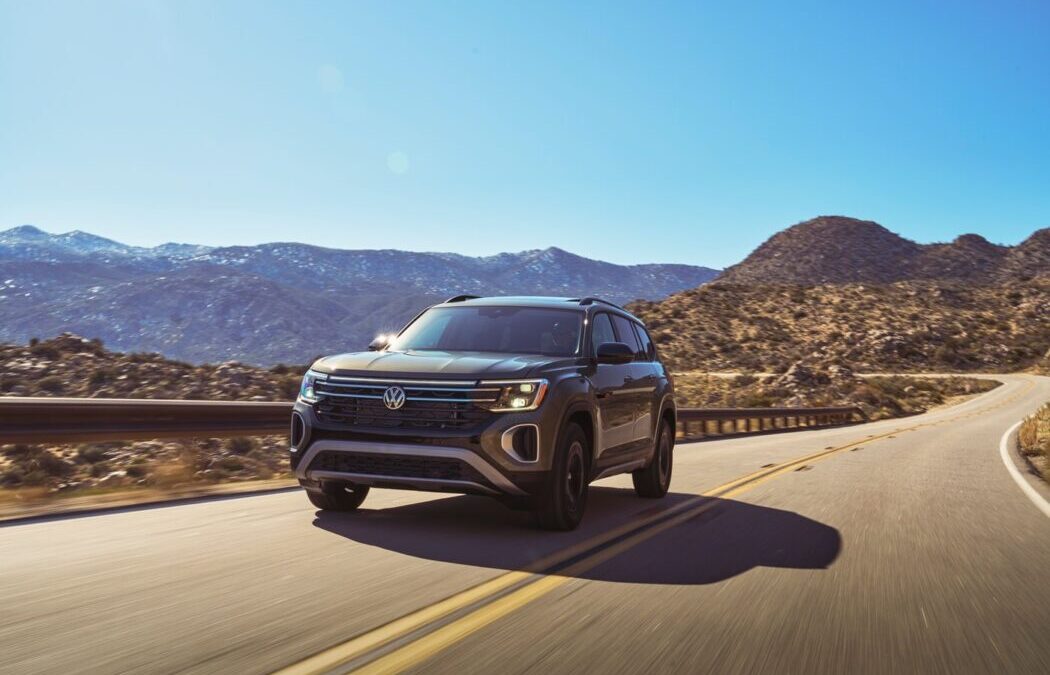


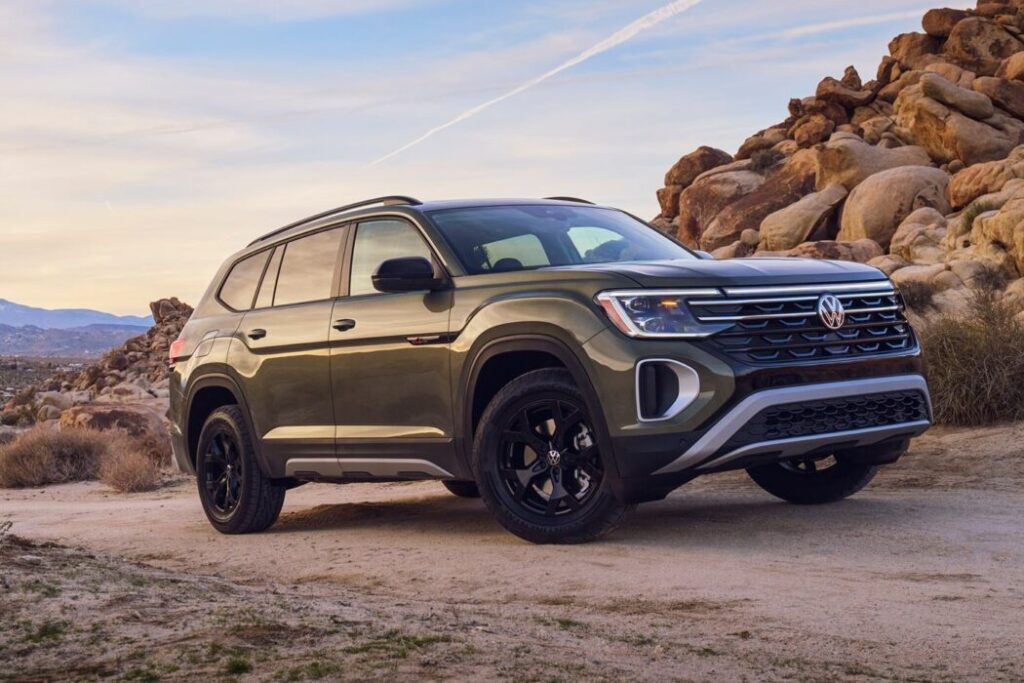
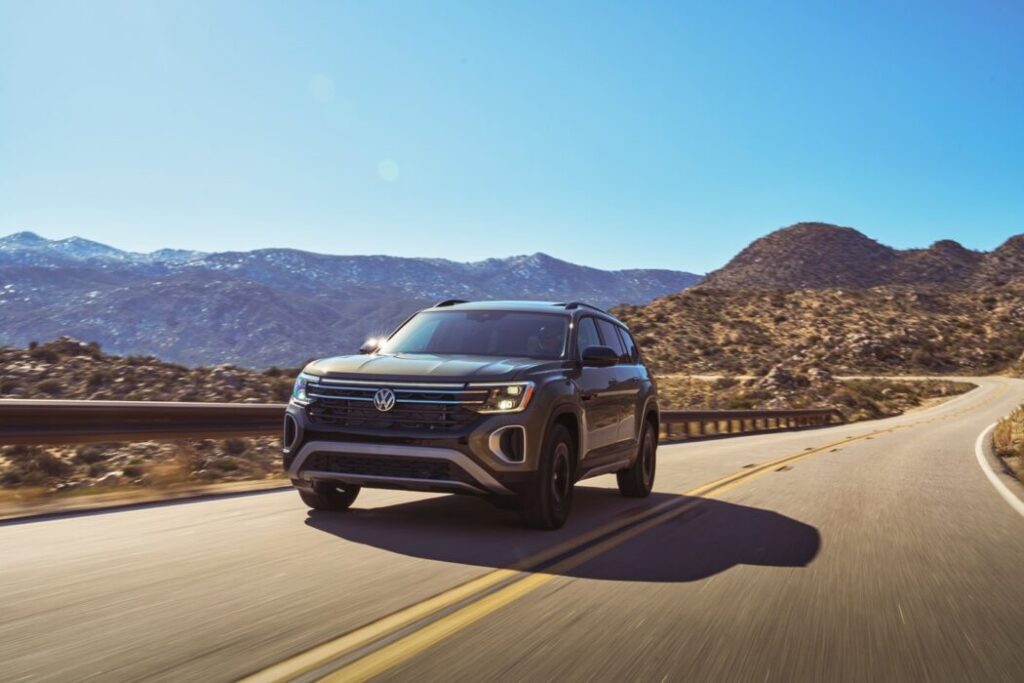

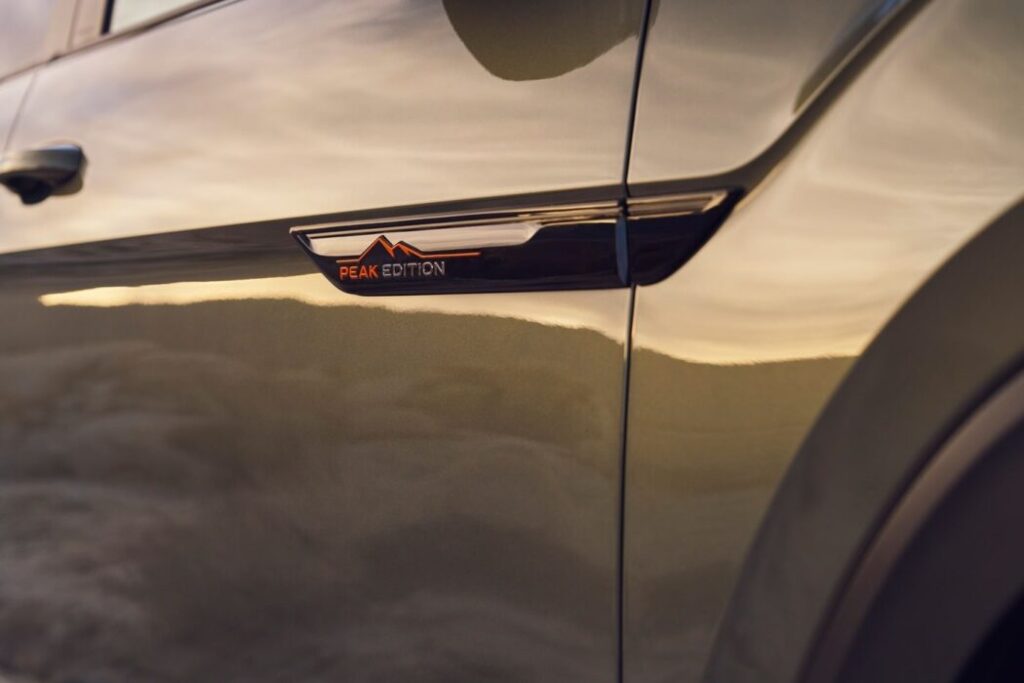
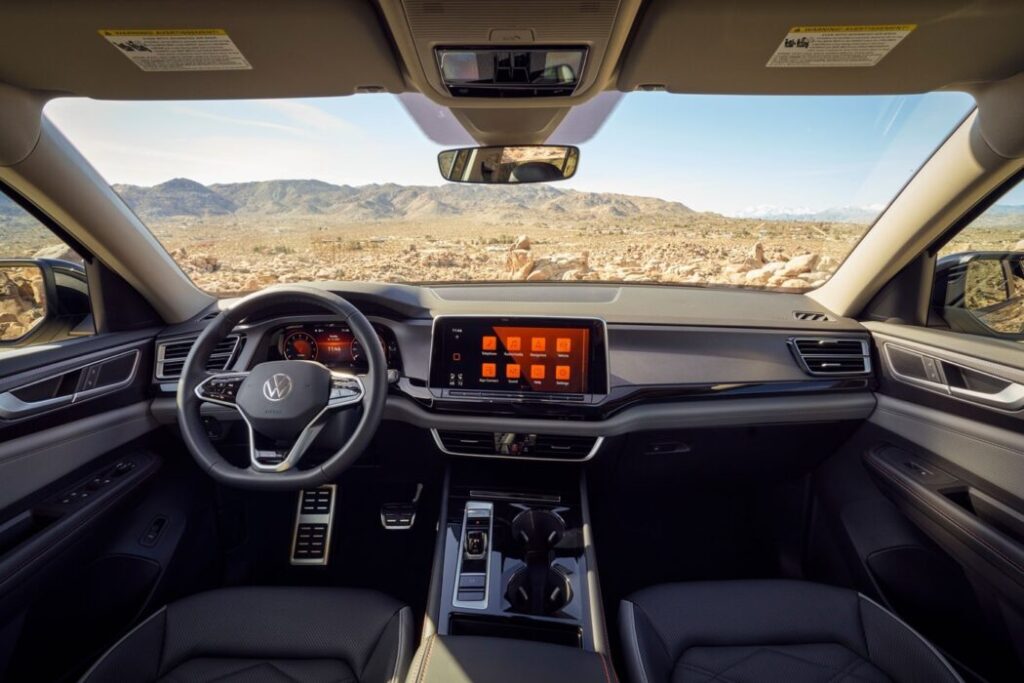

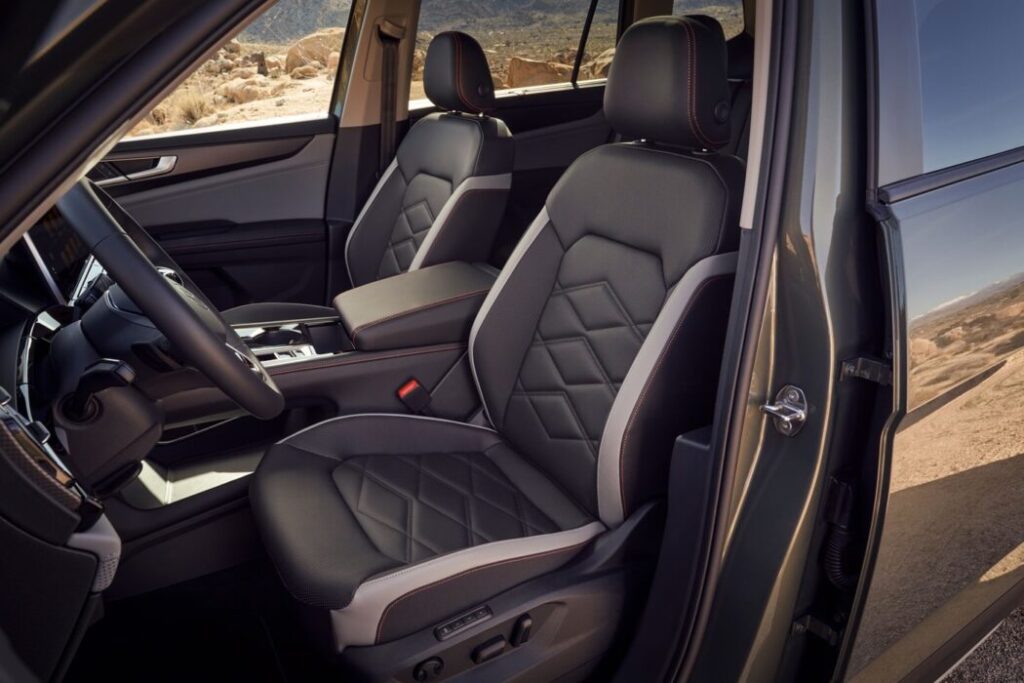

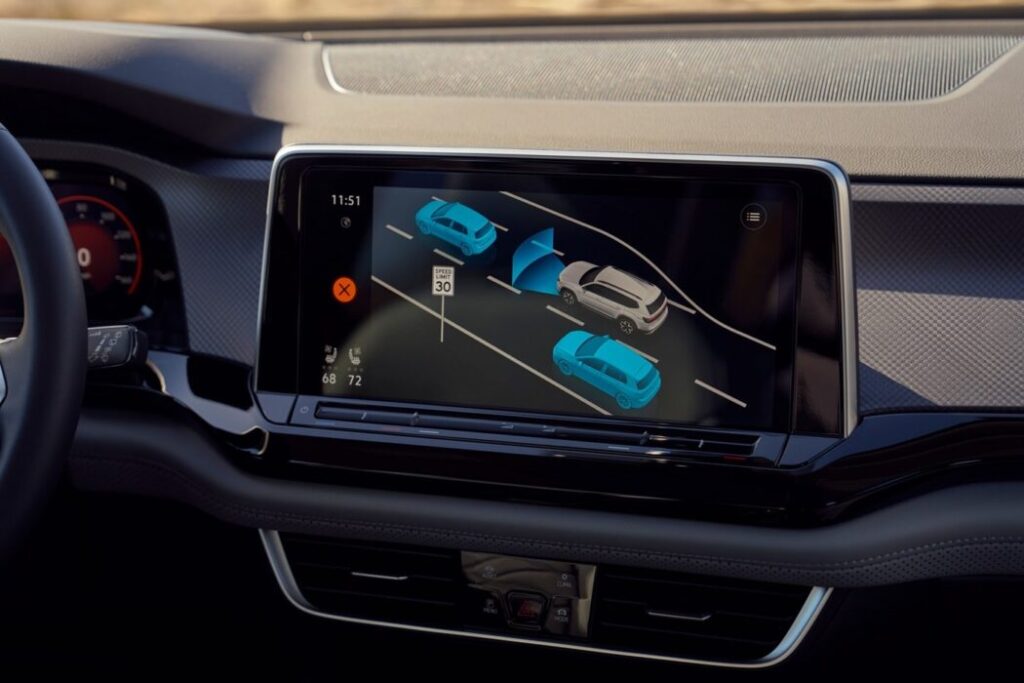

Social Media